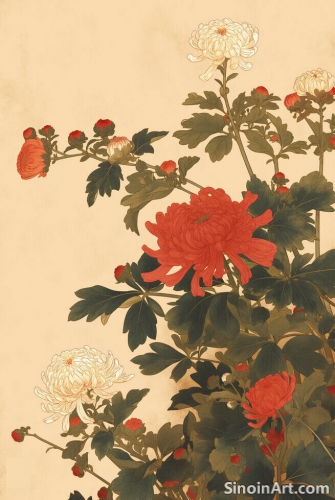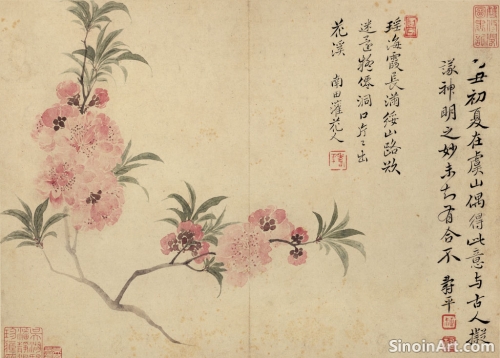Gongbi and the Depiction of Everyday Life
|
While often associated with historical or mythological subjects, Gongbi painting has also been used to depict scenes from everyday life, capturing the mundane and the extraordinary moments of daily existence with the same level of meticulous detail and artistic sensibility. These paintings often serve as records of a specific time and place, bringing to life scenes that may otherwise be forgotten.  Gongbi paintings of everyday life often portray scenes of common activities, such as market scenes, street vendors, and people going about their daily routines. These paintings provide a valuable glimpse into the past, showcasing the customs, clothing, and social structures of a particular era. These works are both works of art and records of a specific time and place.  The attention to detail that characterizes Gongbi painting allows artists to capture the nuances of everyday life, from the textures of clothing to the expressions on people's faces. These subtle details add to the realism and depth of the artwork, creating an authentic sense of time and place.  The composition and arrangement of elements in these paintings often reflect the artists’ observations of daily life. The placement of figures, the arrangement of objects, and the perspective often creates an immersive visual experience that draws the viewer into the scene. The placement of elements in the scene helps to enhance the overall story and meaning of the painting. The use of color also plays a crucial role in creating a sense of time and place. The colors used in the clothing, buildings, and surroundings of the artwork all contribute to the overall atmosphere. The color choices help to convey the mood and the time period of the work. Gongbi paintings of everyday life serve as powerful records of the human experience, showcasing the diversity and richness of human existence. These works help to both record and celebrate the human experience in all its diverse and mundane realities. |
Tag : Gongbi daily life, everyday scenes, genre painting, historical record, social art
Related information
- Gongbi vs. Xieyi: Understanding the Two Pillars of Chinese Painting
- The Role of the Artist's Seal in Gongbi Painting
- Gongbi and the Use of Bird Motifs: Symbolism and Beauty
- Gongbi Painting and the Four Gentlemen: Symbolism in Nature
- The Influence of Gongbi on Other Art Forms
This article contrasts Gongbi painting with Xieyi painting, highlighting the differences in their techniques, brushwork, use of color, and overall artistic goals within the landscape of Chinese painting traditions.
This article discusses the role of the artist's seal in Gongbi painting, highlighting its function as a signature, a visual element, a statement of ownership, and its contribution to the cultural significance and authenticity of the artwork.
The depiction of birds is a prominent theme in Chinese Gongbi painting, often serving as a means to explore the beauty, freedom, and symbolic richness of the natural world. Artists often render a diverse array of birds, from majestic eagles and phoenixes to the more humble songbirds, imbuing them with specific cultural meanings and stylistic characteristics. The birds add a vibrant and often symbolic element to these pieces.
Explores the symbolism of the Four Gentlemen (plum blossom, orchid, bamboo, chrysanthemum) in Gongbi painting, highlighting their cultural significance and representation.
This article explores the influence of Gongbi painting on other art forms, including decorative arts, illustration, animation, fashion, and digital art, highlighting how its emphasis on detail, linework, and color has inspired creativity across various fields.